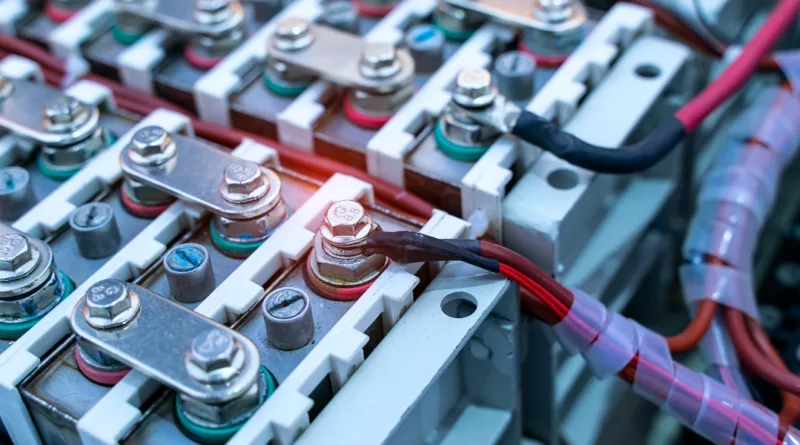The global lithium battery industry has witnessed remarkable growth and investment in recent years, fueled by the increasing demand for electric vehicles (EVs), renewable energy storage solutions, and portable electronic devices. As the world transitions towards a low-carbon economy and seeks alternatives to fossil fuels, lithium batteries have emerged as a key enabler of clean energy technologies. This article will delve into the investments made across the world in the lithium battery industry, identify the countries leading this technology, and analyze the threats and perspectives for this dynamic industry.
Investments in the lithium battery industry have surged in response to the growing demand for energy storage solutions and electric mobility. Governments, corporations, and investors are pouring billions of dollars into lithium battery manufacturing facilities, research and development initiatives, and supply chain infrastructure to capitalize on the expanding market opportunities. Countries such as China, the United States, South Korea, Japan, and Germany are at the forefront of these investments, leveraging their technological capabilities, manufacturing prowess, and strategic partnerships to drive innovation and scale production.
In China, the world’s largest EV market, the government has implemented aggressive policies and incentives to accelerate the adoption of electric vehicles and promote domestic manufacturing of lithium batteries. Chinese companies such as Contemporary Amperex Technology Co. Limited (CATL), BYD Co. Ltd., and EVE Energy Co., Ltd. have emerged as global leaders in lithium battery production, expanding their capacity and investing in research and development to maintain their competitive edge.
Similarly, the United States has seen significant investments in the lithium battery industry, driven by a combination of government support, private sector investment, and technological innovation. Companies like Tesla Inc., Panasonic Corporation, and LG Energy Solution have established manufacturing facilities in the U.S. to meet the growing demand for lithium batteries in electric vehicles, grid storage systems, and consumer electronics.
Leading Countries in Lithium Battery Technology
Several countries have emerged as leaders in lithium battery technology, leveraging their expertise in materials science, engineering, and manufacturing to develop advanced battery technologies and drive innovation. South Korea, home to companies like Samsung SDI Co., Ltd. and LG Energy Solution, is renowned for its expertise in lithium-ion battery technology and has made significant investments in research and development to improve battery performance, safety, and longevity.
Japan, another powerhouse in the lithium battery industry, boasts companies like Panasonic Corporation and Sony Corporation that have been at the forefront of battery innovation for decades. Japanese companies are investing in next-generation battery technologies, such as solid-state batteries and lithium-sulfur batteries, to overcome the limitations of traditional lithium-ion batteries and meet the evolving needs of consumers and industries.
Germany, known for its engineering excellence and commitment to sustainability, is also a key player in the global lithium battery industry. Companies like Varta AG and BMZ GmbH are leading the charge in developing high-performance lithium batteries for automotive, industrial, and energy storage applications, while research institutions and universities are conducting cutting-edge research to push the boundaries of battery technology.
Threats and Perspectives for the Lithium Battery Industry
Despite the significant growth and investment in the lithium battery industry, several challenges and threats loom on the horizon. One of the most pressing concerns is the availability and cost of raw materials, particularly lithium, cobalt, and nickel, which are essential components of lithium-ion batteries. The increasing demand for these materials, coupled with geopolitical tensions and supply chain disruptions, could lead to shortages and price volatility, impacting the viability and profitability of battery manufacturing.
Another threat to the lithium battery industry is the risk of technological obsolescence and market saturation. As battery technologies evolve and new materials and chemistries emerge, companies must continuously innovate and invest in research and development to stay competitive. Failure to adapt to changing market dynamics and consumer preferences could result in companies being left behind or overtaken by competitors.
Furthermore, concerns about environmental sustainability and ethical sourcing are becoming increasingly important in the lithium battery industry. The extraction and processing of raw materials, such as lithium and cobalt, have raised environmental and social concerns, including deforestation, water pollution, and human rights abuses in mining regions. Companies are under pressure to adopt responsible sourcing practices and implement sustainable manufacturing processes to address these concerns and meet regulatory requirements.
Despite these challenges, the outlook for the lithium battery industry remains promising, driven by the continued electrification of transportation, expansion of renewable energy deployment, and advancements in battery technology. As governments around the world implement policies to support clean energy transition and reduce greenhouse gas emissions, the demand for lithium batteries is expected to soar, creating new opportunities for investment, innovation, and collaboration in the global lithium battery industry.
The investments in the lithium battery industry are reshaping the global energy landscape and driving the transition towards a low-carbon future. Countries like China, the United States, South Korea, Japan, and Germany are leading the charge in lithium battery technology, leveraging their expertise and resources to drive innovation and scale production. While the industry faces challenges such as raw material shortages, technological obsolescence, and sustainability concerns, the overall outlook remains positive, with continued growth and expansion expected in the years to come.








